Odessa The pearl of Black Sea, Ukraine
- devildetailspt
- Jan 6, 2022
- 5 min read
Odessa is a beautiful port city on the Black Sea in southern Ukraine built by Catherine the Great. It’s known for its beaches and 19th-century architecture, including the Odessa Opera and Ballet Theater.
Tip: take google translator app, locals already have two mothertongues (ukrainian and russian) so they don't speak english. It is a safe city, and all the places mentioned are walking distance.
Day 1
Starting at the Opera House built in 1874,
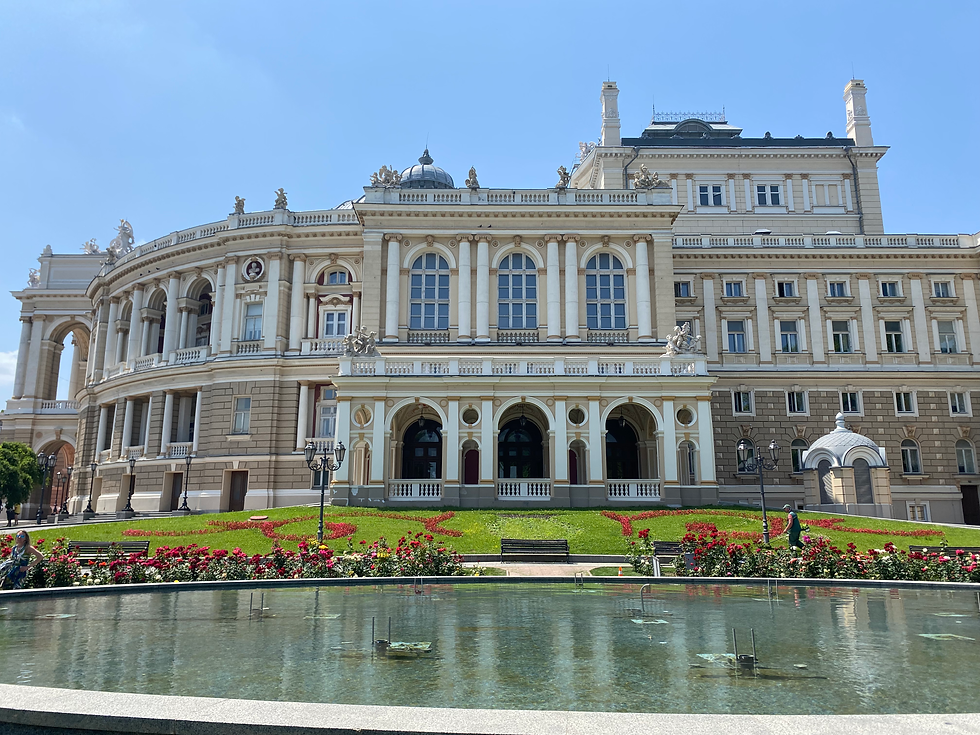



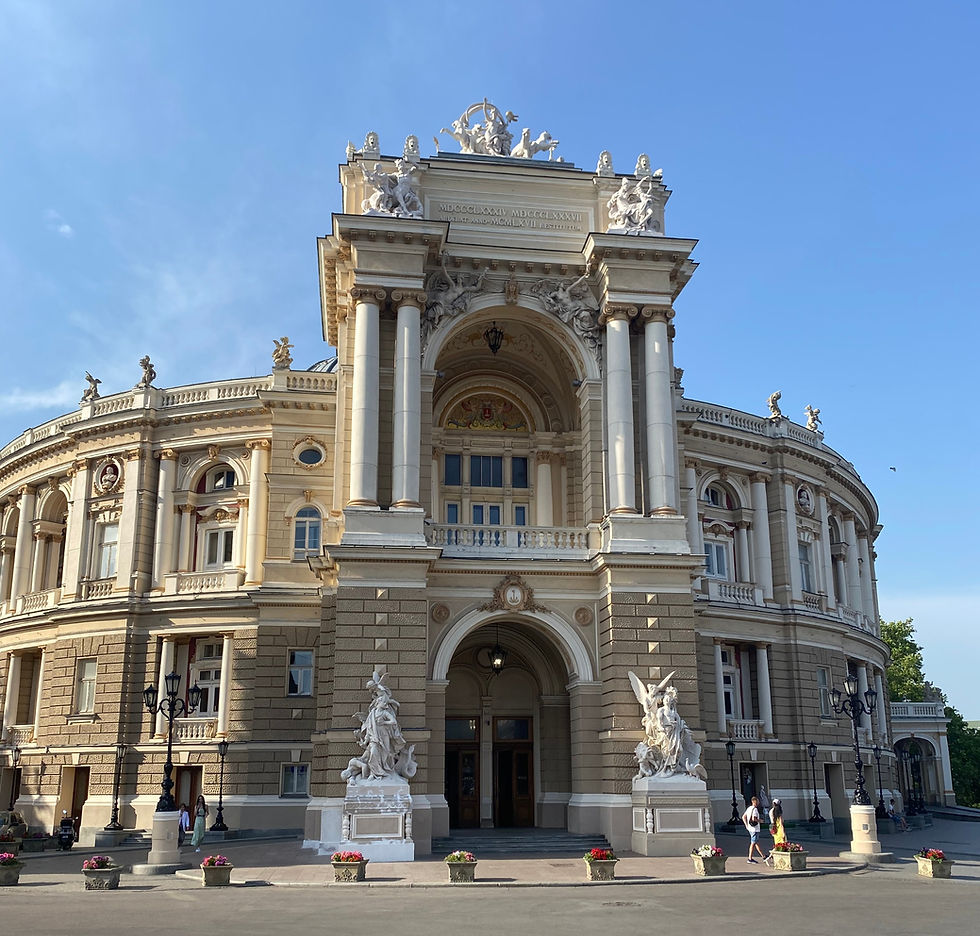
walk to the Monument to the founders of Odessa, also known as monument to Catherine the Great and her companions: José de Ribas, François Sainte de Wollant, Platon Zubov and Grigory Potemkin, built in 1900,
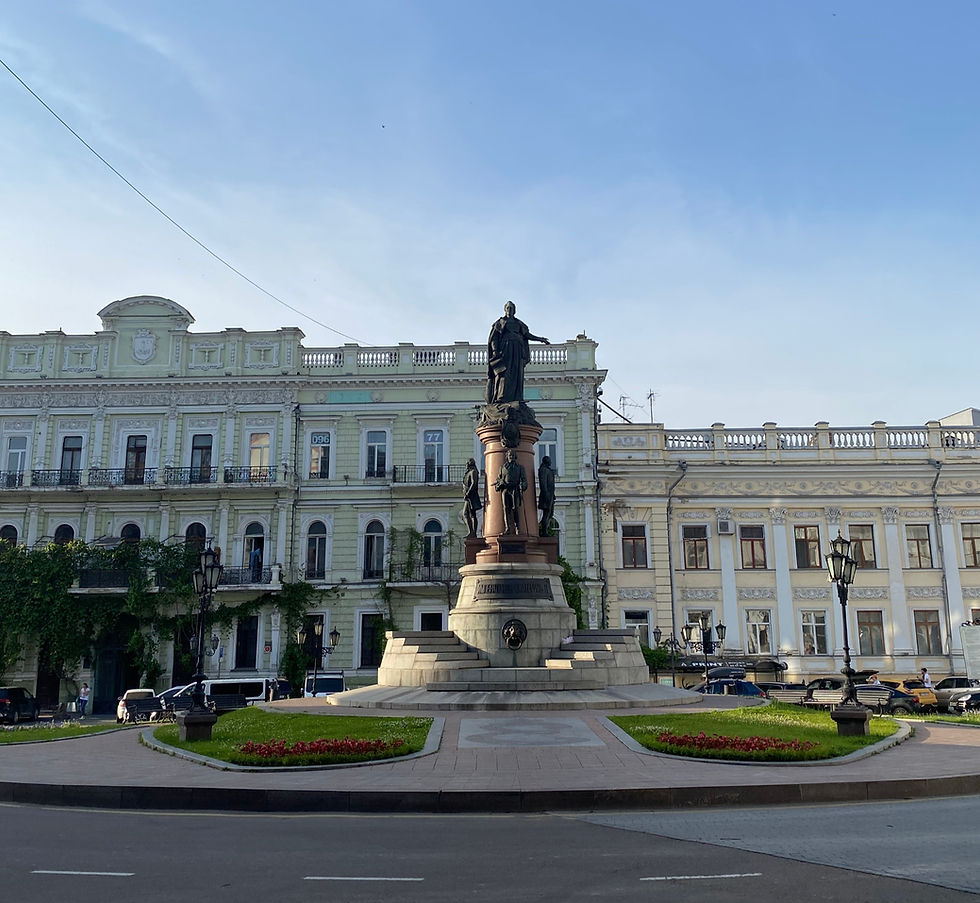
then take a right to the crooked house also know as 'witch house' because of the ilusion it causes standing from most angles where it looks flat, as though there is no back of the house.
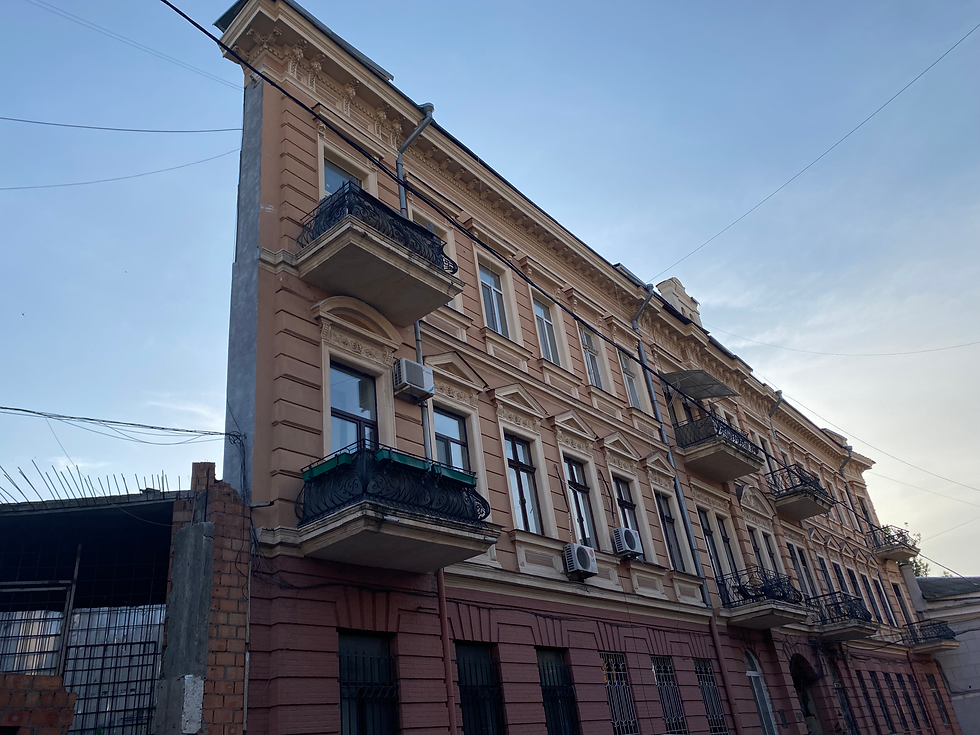
Then return to Catherine II and take a left this time. The Tolstoy Palace commonly known as the House of Scientist is a tourist attraction, although Lev Tolstoy never stayed there.
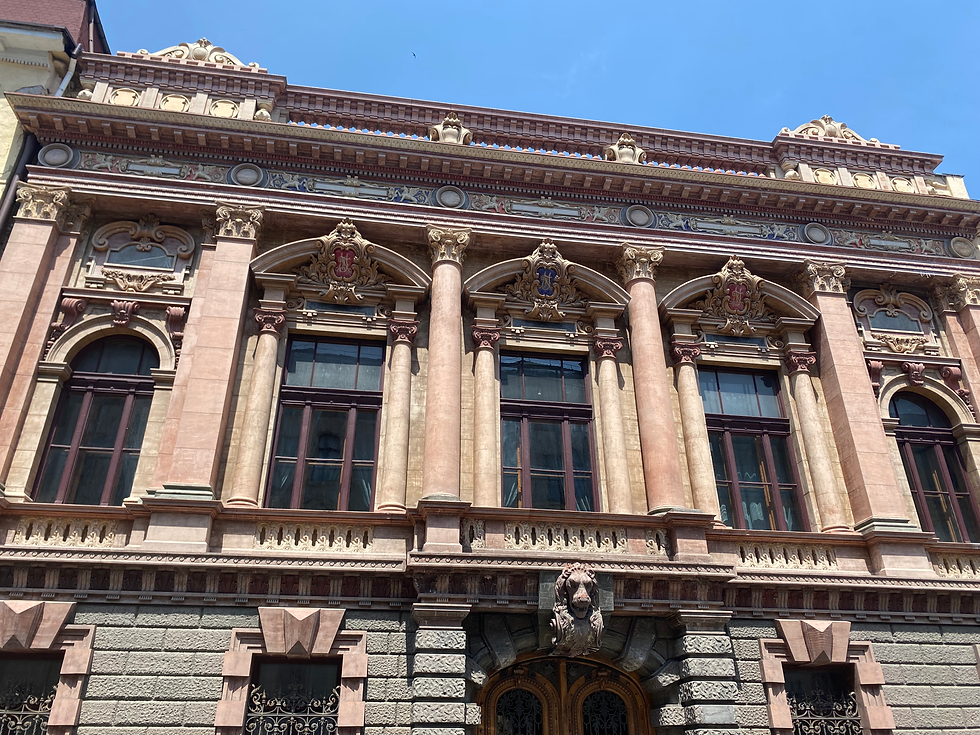
Carry on to Faltz-Fein House with the altas statue (the greek titan holding the world on his shoulders).

Next the Shah's Palace a beautiful building constructed in 1852 for a polish tycoon but later on rented for 10 consecutive years by the Persian sash, Mohammed Ali, who was dethroned, banished from his own country, and then settled down in Odesa. The citizens fell in love with their overseas guest for his generosity – every time he went out to the city, he would give a many presents to everyone who crossed his path. Since then, the locals nicknamed this edifice the Shah's Palace.

See the statues in the Primorsky Boulevard park of 'momument to orange' (a bronze composition installed in 2004, in honor of the fruit, which saved Odessa. According to legend, at the end of the XVIII century, Empress Catherine II issued a decree on the construction work of a commercial port, however, this imperial order was never executed in her lifetime. Tsar Paul I also did not want to implement it, citing its high costs. Representatives of the Odessa merchants found out about this and decided to send him many oranges on carts. Such exotic fruits as oranges, in those days were deficient for Odessa citizens. Paul I was very pleased with their taste and cheerful appearance and decided to renew his mother’s decree on the development of Odessa and the construction of a commercial port.) and the heart full of locks and the lovers bridge, a small wooden bridge which is very interesting to cross for it is very very steep.



TheTioschin Bridge also known as the mother-in-law bridge from an old tale told that mr Sinitsa (who order the construction of the bridge), very much loved his mother-in-laws pancakes, but they lived on different avenues so he came up with the idea of building and expensive pedestrian bridge, with little value for the city. This bridge also holds many padlocks and it a sensitive bridge so if you jump at the same time together with somebody, it is impossible not to feel the vibrations.

The colonnade of Vorontsov Palace built in 1827, used to be the residence of Michail Vorontsov, who has served as a governor-general of the Novorossiya region, many balls and audiences were held.

The monumental Potemkin Stairs, immortalized in "The Battleship Potemkin," lead down to the waterfront with its Vorontsov Lighthouse. Today the staircase consists of 192 steps (originally there were exactly 200, but with the expansion of the port eight steps were lost) and a dozen spans. The lenght of Potiomkin Stairs is 142 meters, it is created long-ranged – its base (width 21.7 m.) is wider than the upper part (12.5 m.), so that’s why when you look from above the staircase, appears an impression of equal width throughout its length. Railings of the staircase seem to be parallel and you can see only the pace (except the top of the march). When you look from below, staircase seems to be much longer and only a continouos cascade of steps can be seen.


Running parallel to the water, the grand Primorsky Boulevard is a popular promenade lined with mansions and monuments such as the odessa city council and the cannon.

The Shevchenko park, has an old arcade wall with a turret. More than 200 years ago, the Turkish defensive line was located on this territory. In 1793, in its place laid the Odessa fortress, which existed for about 20 years, which did not give the Turks the opportunity to regain the bay and allowed to build a harbor andthe city. In 1811, the fortress was abolished and quarantined; some parts of it have survived to this day: the powder tower and the arcade. The Quarantine Harbor was located at the bottom of the arcade, in which ships arriving in Odessa defended for about 2 weeks in order to prevent the spread of the plague epidemic. After the quarantine was canceled and the planning of a new park began, the quarantine wall became a popular viewing platform.
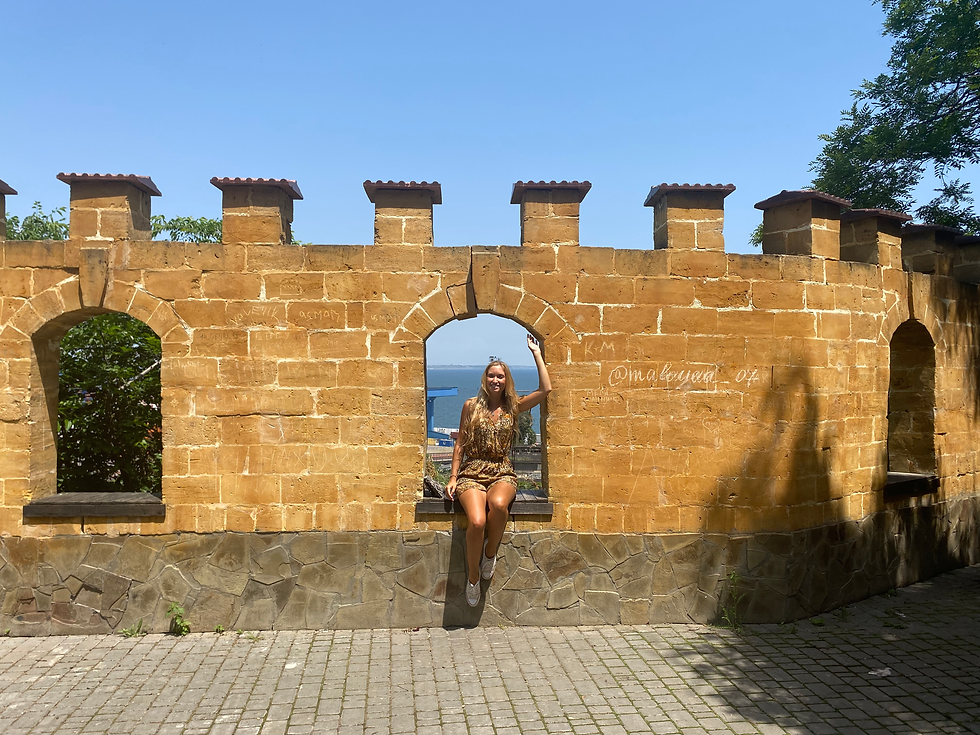
Visit the Odessa beaches , the nemo dolpinarium is very family friendly. The beach entrance yellow arch, of one of the most beautiful beaches of Odessa called Lanzheron beach.
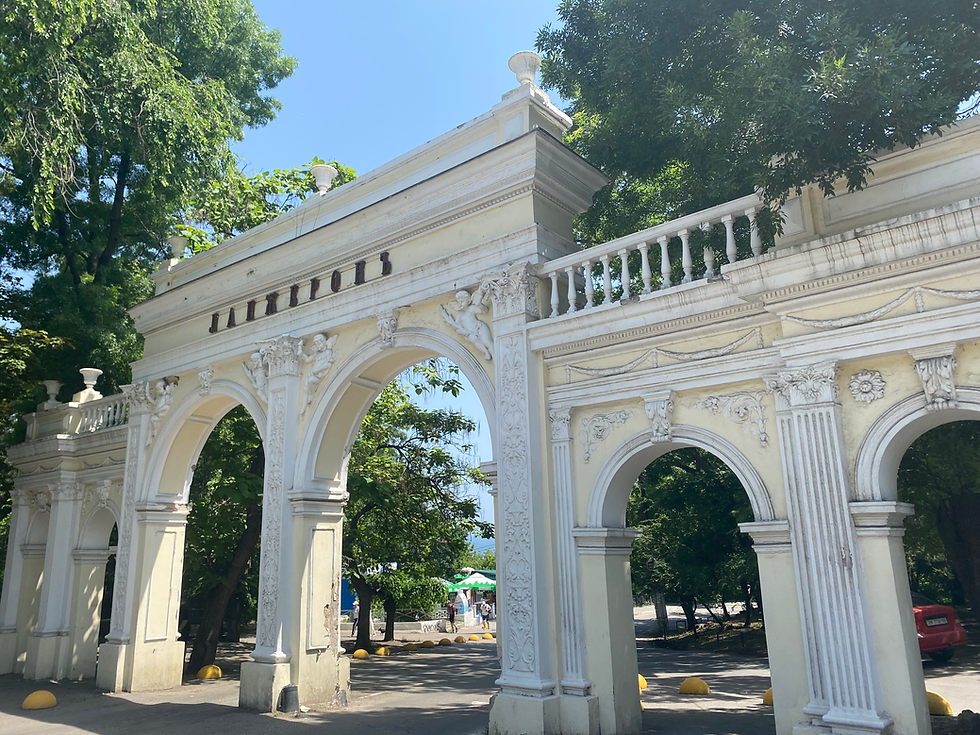
As you walk along the beached you must see the “The House of the Sun” in the Lanzheron Embankment. It is made in the form of an old Odessa door with the inscription “Domus Solis”. The door is slightly open to the east and through it in the morning you can watch the rising sun, which hurries to warm the excited heart of Odessa – the Black Sea. The bronze sculpture has a wooden prototype – the door, the life of which stretched over two centuries.

To go back up take the Funicular!

Day 2
Start at the famous Diribasovskaya to head to City garden 'Gorsad' (close to the opera house), it is full of bright colors, beautiful flowers and interesting sculptures. You can find the tree of love here.

The Odessa Passage, a monumental hotel building, constructed in late 19 century, it represents the golden era of Odessa, a time of prosperity and stability.

The Cathedral square holds an incredible Orthodox church ornated in gold, beautiful outside but even more precious inside, Spaso-Preobrazhensky Cathedral (Transfiguration Cathedral) founded in 1794. Orthodox churches have no pews in Orthodox churches, because people stand during services, men need to take their hats off while women cover their heads.
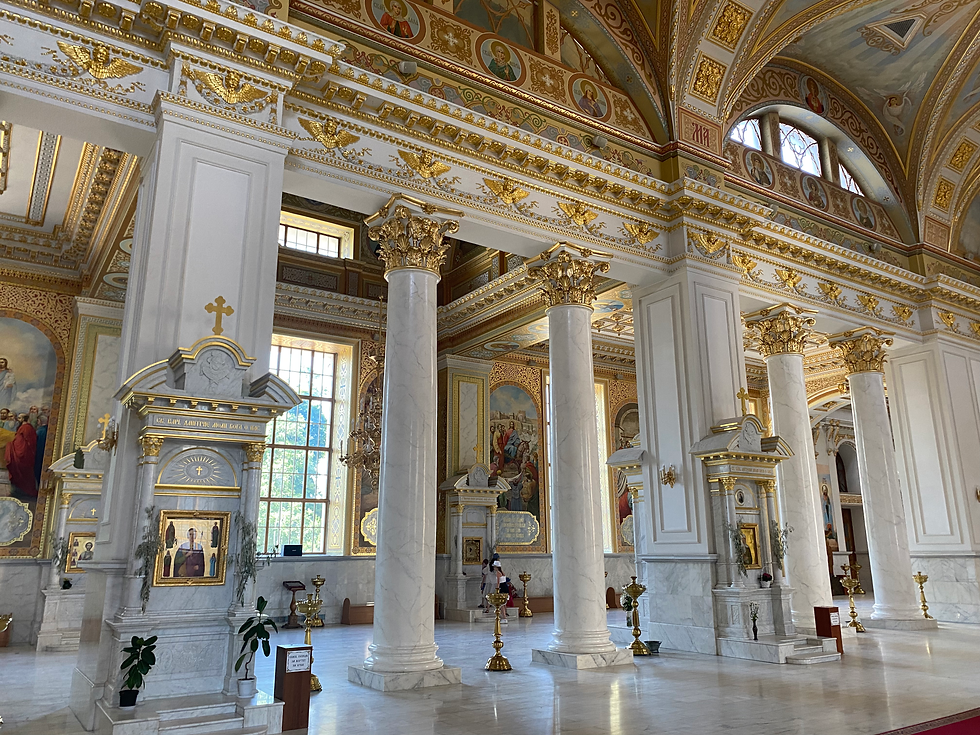


Behind the moment of Mikhail Vorontsov is an enchanting large green building (Budynok O. P. Russova Na Sadoviy Vulytsi).

Catch an Opera or Ballet Show in the evening, remember to dress smart.
Other:
We found this tradtional restaurant in Diribasovskaya street where the staff wore traditional clothing too (the name was in Russian so I cannot reproduce it).

This very instagrammable cafe:
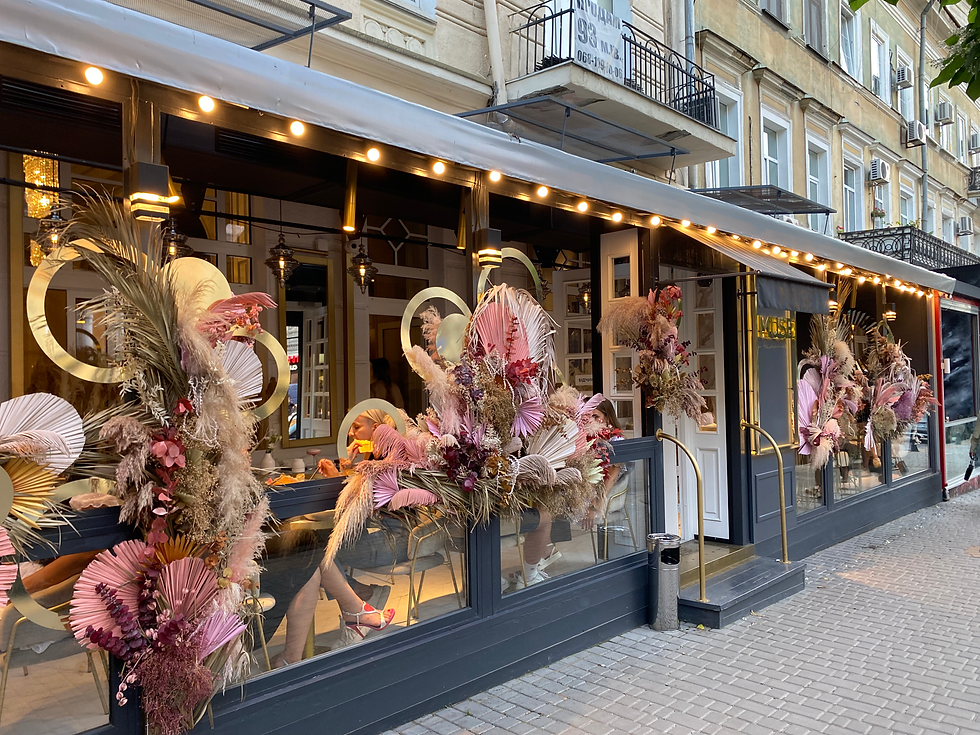
Take a bus tour they will tell you all the Odessa legends, although you can see Odessa in two days by foot.
Try Shustov cognac in the Shustov Cognac Museum
Go wine tasting at the Shabo winery
Take a day trip to Bilgorod-Dnistrovky Fortress
Look for the Odessa street art
Explore the Odessa catacombs





Comments